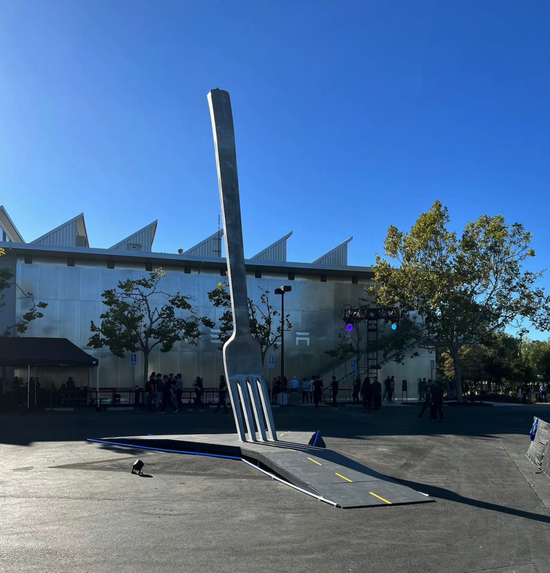your current location is:Home > TechnologyHomeTechnology
Apple and Meta bet on penetrating MR technology MR headsets are on the horizon and can replace mobile phones in the future?
Apple and Facebook parent company Meta are expected to release mixed reality (MR) head-mounted display devices (hereafter "head-mounted displays") in the coming year.
This may push headsets to replace mobile phones as the next generation of personal devices, a promise made by tech giants.
But a major potential obstacle to promoting such products is their price.
According to the International Data Corporation (IDC), the Meta Quest 2, the best-selling virtual reality (VR) headset on the market today, retails for $399-$499 and will account for 78% of the nascent VR market in 2021.
The next-generation headset will cost several times as much as the current Quest 2. Earlier this year, Meta said the new high-end headset, called the "Cambria," is expected to cost at least $800.
It has also been reported that an unannounced headset from Apple could cost thousands of dollars.
Such high pricing would be a hurdle for the company for such a product that has yet to go mainstream. IDC pointed out that the global shipment of VR devices last year was only 11.2 million units, while Apple's iPhone can sell tens of millions in a few weeks. This gap is quite disparity.
The giants' new gamble
To expand the market, Meta and Apple need to convince consumers that more advanced technology is worth investing in. According to media reports, both companies are betting on a new technology called "Pass through Mixed Reality," which requires better displays and more powerful processors.
If the MR technology is as advertised, future headsets will have both VR and augmented reality (AR) capabilities, enhancing the fusion of virtual applications and the real world.

In existing VR devices, the sense of experience is limited to the virtual content displayed by the headset; while in penetrating MR technology, a more powerful camera installed outside the VR headset captures real-world images and displays them Send to two or more monitors to present both real images and virtual scenes in front of the user's eyes.
The technology allows developers to overlay software or graphics on top of real-world video and enhance the fusion of the two.
 (Note: Differences and associations between VR, AR, and MR)
(Note: Differences and associations between VR, AR, and MR)cost constraints
The main problem with penetrating MR headsets is that the device requires a lot of expensive components and a powerful helmet-mounted display, and the high cost limits its market size.
The components required for the penetrating device include: 1. an advanced camera to capture detailed video; 2. a depth sensor to measure the user's surroundings and track the user's eyes, so as not to waste energy and cause the human eye to not pay attention three, powerful processors and software to reduce the lag and blurring of displayed images; four, high pixel density screens, which are so close to the user's eyes that the pixel requirements of their displays are much higher than those of smartphones .
According to CounterPoint Research, smartphone screen pixel density averages around 550 pixels per inch (PPI), while MR headsets require displays around 3,500 PPI.
Some believers in the technology believe that eventually the technology could be condensed into a pair of glasses with lightweight, clear lenses, but that's not yet possible.
challenging
As far as some of the existing MR devices on the market are concerned, either the experience is limited by insufficient processor power, such as displaying black and white or low-quality video; or the price is too high and there are limitations.
Currently on the market is a head-mounted display device XR-3 from the Finnish company Varjo, which provides full-color, low-latency penetrating MR technology. It has two 2880×2720 pixel displays. Processing power is more concentrated to provide better image quality wherever the user's eyes are.
However, the device is expensive and heavy, with a price of $6,495, a yearly rental of about $1,500, and the sale is mainly to businesses.
And one of the biggest limitations of the XR-3 is that the user must connect the device to a powerful computer via a cable. Meta and Apple, on the other hand, are focused on developing headsets that don't need to be connected to a separate computer.
Urho Konttori, founder of Varjo, said it was tricky to develop a product that had the right weight, size, function, experience and price, and the current cost and shipping costs were high. Meta and Apple still face challenges.
Apple has been tight-lipped about an MR head-mounted display device it is developing, which according to media reports is similar to ski goggles, with a powerful self-developed chip inside and a higher-resolution display than currently on the market.
Meta's Cambria, due to be released later this year, also looks like a pair of ski goggles, supporting full color. In May, Meta said the Cambria would be "significantly higher" than $800.
The "Holy Grail" of MR Technology
One of his main goals, Konttori says, is to improve display quality to the point where it can almost mimic the human eye, which he calls the "holy grail" of MR technology.
The key to the technology, Konttori says, is "the ability to fuse the physical reality around you with the virtual reality and make it a coherent scene where you can no longer distinguish between what's real and what's virtual. ."
An advanced version of the technology will provide a high-accuracy experience that will be the same as what the human eye sees, Konttori said.
While penetrating MR technology hasn't really hit the market and will be very expensive once it does, Metaverse developers are fully supporting the technology.
The main alternative to this technique is the optical-based MR technique. Products currently on the market include Microsoft HoloLens 2, Magic Leap One, etc., which are based on optical guided wave technology, integrating computer images with the real world, and are a kind of transparent display.
Such transparent displays are also expensive and have many hurdles to overcome, such as poor use in bright sunlight, poor image quality, blurry text, and more.
Varjo is betting on penetrating MR technology, which Konttori believes is a better approach, saying it is fully digital, computational, and will win in the future.
related articles
Article Comments (0)
- This article has not received comments yet, hurry up and grab the first frame~












